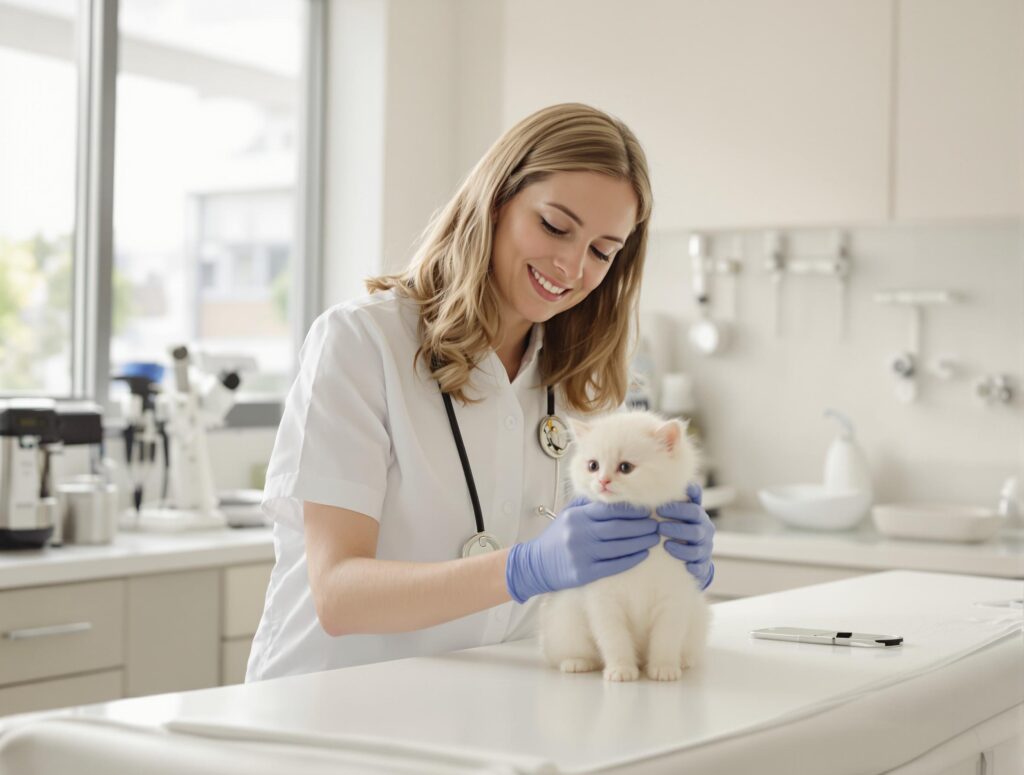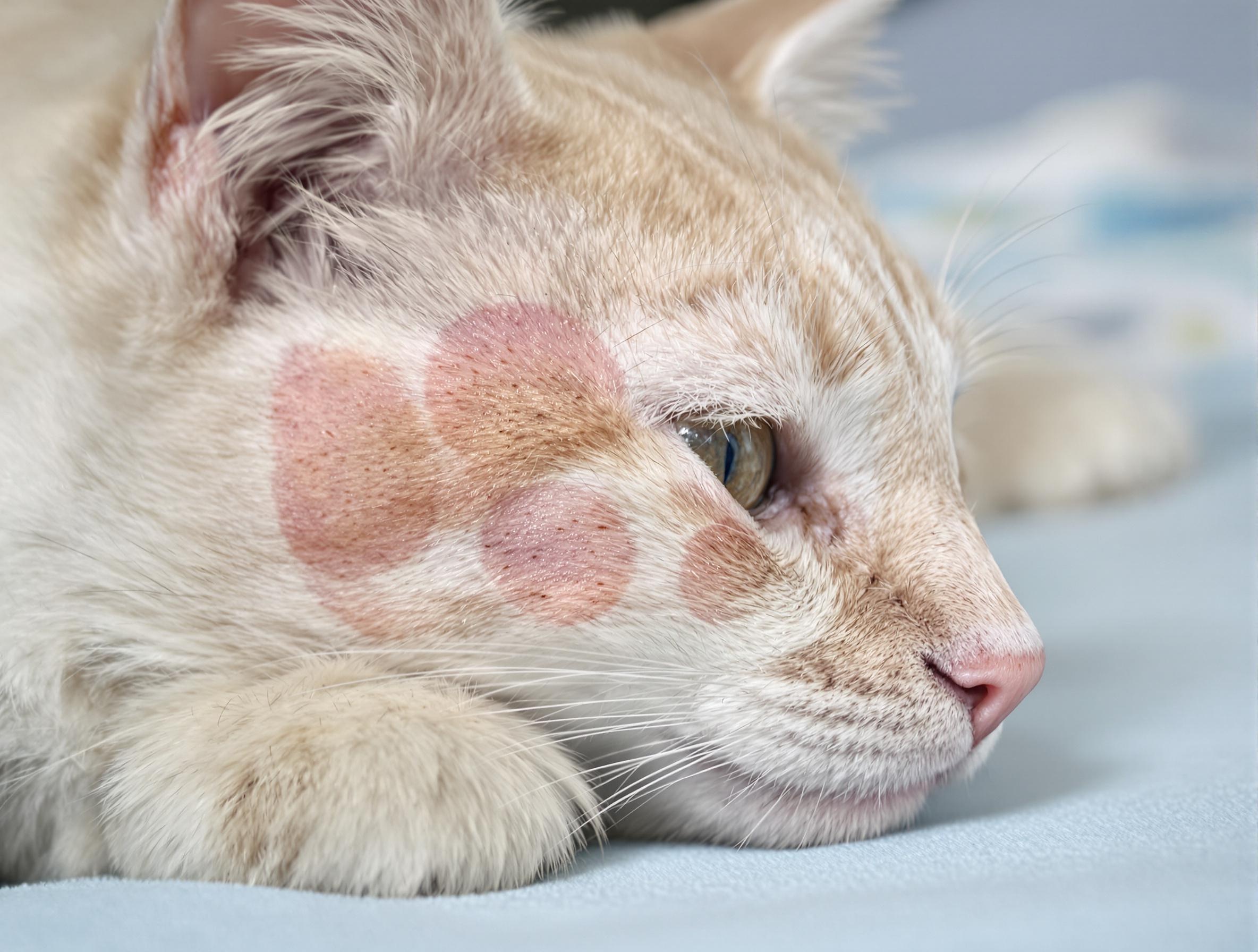7 Steps to Care for Your Newborn Kitten Without a Mother

Key Takeaways:
- Ensure a warm and secure environment for your newborn kitten to thrive.
- Master a proper feeding routine with a kitten milk replacer to support growth.
- Engage in gentle interactions and monitor milestones for healthy social development.
Finding a newborn kitten without a mother can tug at the heart and spark a wave of questions. What does the kitten need right now? How can they be kept safe and healthy? It’s a big responsibility but also a rewarding experience. This tiny, vulnerable life now depends on your care. Though not easy, with guidance and support, it’s possible to help them grow into a happy, healthy cat.
As a stand-in caregiver, you’ll provide round-the-clock help, proper food, and warmth for healthy growth. Your vet can help determine the kitten’s condition and recommend the right care plan. Here at PetHealthMD, we also offer trusted information to assist with basic kitten care. Here are seven helpful steps to follow.
Step 1: Set Up a Warm and Secure Nest
A kitten needs to feel safe, warm, and cared for—just like they would with their mom. Create a cozy nest in a small box or basket lined with soft blankets or fleece. Place it in a quiet area away from windows or doors.
To keep them comfortable, use a pet-safe heating pad under half the bedding so the kitten can move to a cooler area if needed. Keep the temperature between 85-90°F (29-32°C) during the first week, then slowly lower it to 80°F (27°C) by week four. A nearby humidifier can make breathing easier.
Check the temperature regularly, especially overnight. A digital thermometer helps ensure consistency. Replace any damp blankets right away. If a kitten feels too warm or too cold, or if there are concerns about their space, contact a veterinarian.
Step 2: Master the Feeding Routine
Feeding is a vital part of kitten care. Use a high-quality kitten milk replacer—never cow’s milk or baby formula. Prepare a fresh batch for each feeding and test the temperature on your wrist; it should feel warm, not hot.
Kittens usually need small, frequent meals every 2–4 hours, including during the night. Place the kitten on their belly and hold the bottle at a 45-degree angle. Gentle sucking and swallowing mean the feeding is going well.
If a kitten doesn’t eat after several attempts, contact a vet. It may be a sign of illness or digestive issues. For a full range of feeding supplies, visit the Cat Food & Treats section on 1800PetMeds.com.
Step 3: Support Digestive Health and Hygiene
During the first few weeks, kittens need help going to the bathroom. After each meal, use a warm, damp cloth to gently rub their lower belly and bottom.
Keeping your kitten clean also prevents irritation. Use soft, fragrance-free wipes or cloths to gently clean their face, paws, and bottom. This helps them feel safe and cared for.
Watch for any changes in how often they go to the bathroom or changes in stool. Keep bedding fresh and supplies clean. If anything looks unusual, contact a vet.
Step 4: Monitor Growth and Health
Daily checks help ensure healthy progress. Weigh the kitten each morning before feeding. Healthy growth is about 10–15 grams per day.
Signs of healthy growth include:
- Steady weight gain
- Normal breathing and healthy skin
- Regular bathroom habits
If there’s weight loss, tiredness, or constant crying, reach out to a vet. For cleaning and care items, explore Cat Grooming Supplies to keep your kitten healthy and comfortable.

Step 5: Encourage Social Development
Building trust starts with calm, gentle interactions. Speak softly and gently stroke your kitten’s fur to help them feel secure.
Between weeks 4 and 17, begin introducing safe toys, new rooms, and household sounds. Keep play sessions short and supervised. Use kitten-safe toys to build coordination and confidence.
Step 6: Track Developmental Milestones
Observing weekly progress helps you understand how your kitten is growing.
- Week 1: Expect frequent meals and long naps. A full, round belly shows good feeding.
- Weeks 2–3: Eyes start to open, and movement strengthens. Baby teeth may emerge.
- Weeks 4–5: Walking improves. Start mixing wet kitten food with formula.
- Weeks 6–8: Kittens begin climbing and playing more. Plan a vet check and introduce varied food textures.
Bright eyes, playful energy, and steady weight gain signal good health.
Step 7: Transition to Solid Food and Independence
At around four weeks old, kittens start showing interest in solid food. Begin with a blend of warm formula and wet kitten food in a shallow bowl. Gradually thicken it over time and offer a small water bowl nearby.
By weeks 6–7, softened dry food can be introduced. Watch for any signs of stomach upset or reduced interest in food. If issues arise, contact your vet.
Frequently Asked Questions About Newborn Kitten Care
What’s the best way to keep a kitten warm?
Use a heating pad on one side of their space and maintain temperatures at 85–90°F during the first week.
How can bottle-feeding success be determined?
Look for steady weight gain, calmness after meals, and restful sleep. If these signs are missing, contact a vet.
What health signs require veterinary attention?
Call a vet if the kitten misses more than one meal, cries excessively, breathes oddly, has pale gums, or seems unresponsive.
How to safely encourage bonding?
Keep the environment calm and quiet. Soft voices and light touches help the kitten feel secure.
When to introduce the litter box?
At about three weeks old, place the kitten in a shallow box after meals. Use non-clumping litter and be patient.
How to recognize healthy growth?
Eyes opening at 7–10 days, walking by 2–3 weeks, interest in food by 4 weeks, and steady weight gain all indicate good progress.

A Strong Foundation for Kitten Care
Caring for a motherless kitten takes patience and dedication. With warmth, clean conditions, and regular feedings, kittens can grow into healthy and happy cats. Always rely on a licensed veterinarian for medical advice and care.
For more trusted resources on kitten care, visit the 1800PetMeds.com Cat Category to explore health, nutrition, and wellness essentials for every stage of your kitten’s growth.





